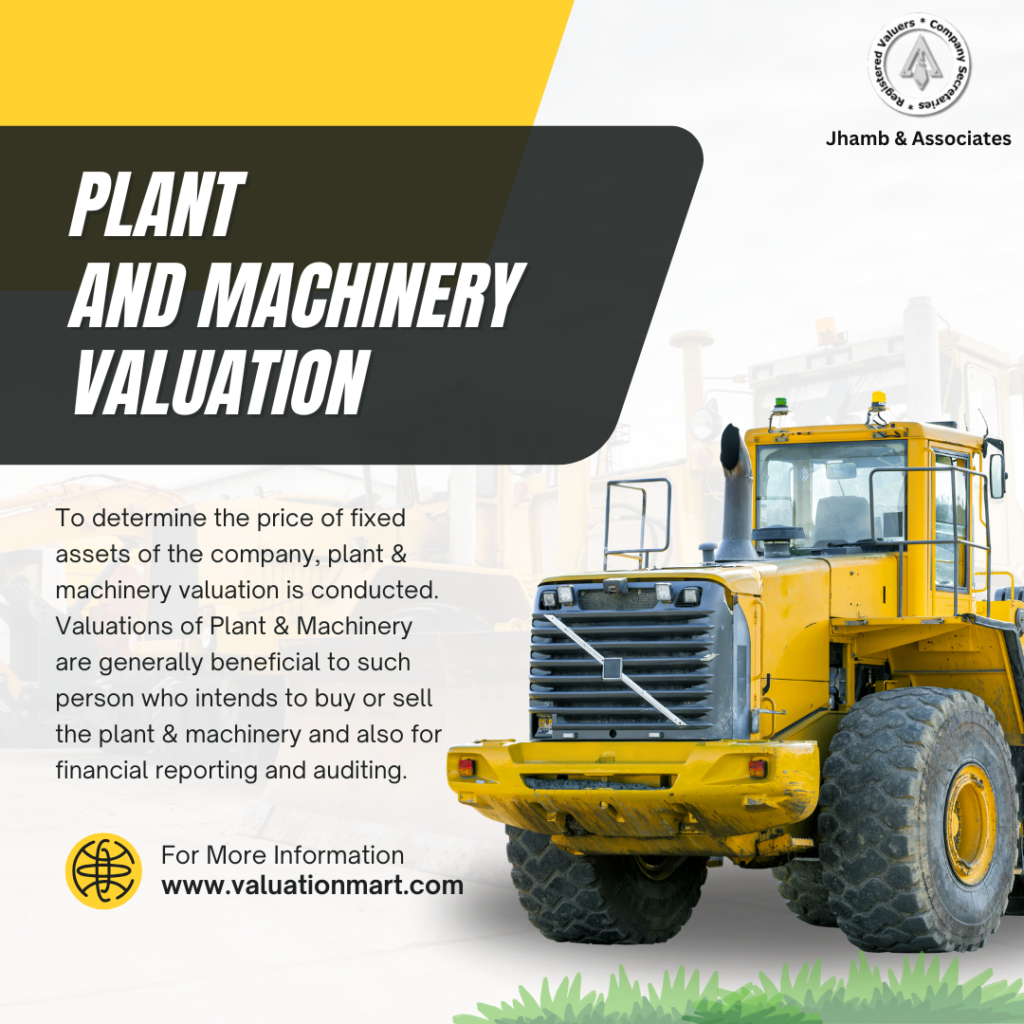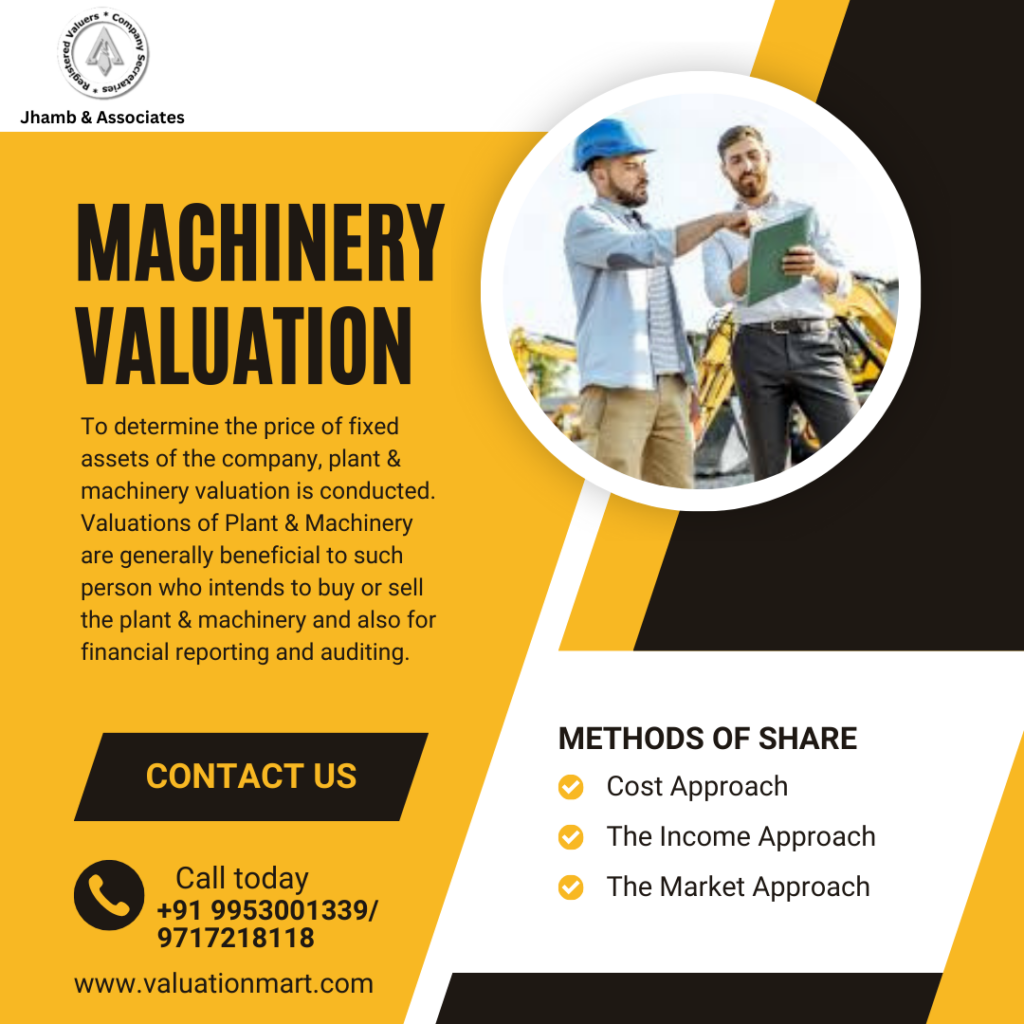
Plant & Machinery Valuation is a critical process for businesses, investors, and financial institutions. It ensures accurate asset valuation for purposes such as financial reporting, mergers and acquisitions, loan security, insurance, and investment analysis. Given the capital-intensive nature of plant and machinery, understanding the key factors that influence valuation is essential for making informed financial decisions.
1. Purpose of Valuation
The first step in Plant & Machinery Valuation is identifying the purpose of the valuation. The reason for valuation affects the approach and methodology used. Some common purposes include:
- Financial Reporting: To ensure compliance with accounting standards and provide an accurate representation of asset values on the balance sheet.
- Mergers & Acquisitions: To determine the fair market value of assets in a business transaction.
- Loan Security: To assess the value of machinery when used as collateral for financing.
- Insurance: To establish an appropriate sum insured and determine potential losses in case of damage or theft.
- Taxation and Depreciation: To calculate tax liabilities and depreciation expenses accurately.
2. Methods of Valuation
There are several methods used in Plant & Machinery Valuation, depending on the nature of the asset and the purpose of valuation. The three most common approaches include:
Market Approach
This approach compares similar assets in the market to estimate value. It is commonly used when there is an active market for the machinery being valued. Factors like condition, age, and demand influence the final valuation.
Cost Approach
This method estimates value based on the cost required to replace or reproduce the machinery, minus depreciation. This is particularly useful for specialized or custom-built machinery with limited market comparables.
Income Approach
The income approach evaluates the value of machinery based on its ability to generate future cash flows. This is often used when machinery is income-generating, and its value is linked to production capacity and profitability.
3. Depreciation and Obsolescence
Depreciation is a crucial factor in determining the current value of plant and machinery. It accounts for the reduction in asset value over time due to wear and tear, usage, and technological advancements. The main types of depreciation include:
- Physical Depreciation: Due to wear and tear from usage and aging.
- Functional Obsolescence: When machinery becomes outdated due to new technological advancements.
- Economic Obsolescence: When external market factors, such as reduced demand or regulatory changes, reduce the machinery’s value.
4. Market Conditions and Demand
The market value of plant and machinery is influenced by economic conditions, industry trends, and supply-demand dynamics. In a booming economy, businesses invest more in machinery, driving up prices. Conversely, during economic downturns, the demand for machinery decreases, leading to lower valuations.
5. Machinery Condition and Maintenance History
Well-maintained machinery retains higher value compared to neglected or poorly serviced equipment. Regular maintenance, proper servicing records, and upgrades can enhance valuation, whereas poorly maintained machinery depreciates faster.
6. Brand, Model, and Manufacturer Reputation
The brand and model of machinery play a role in its valuation. Well-established manufacturers with a reputation for durability and efficiency tend to have higher resale values. Additionally, machinery from reputable brands often has better after-sales service, spare parts availability, and market demand.
7. Technological Advancements
The rate of technological change significantly affects the value of plant and machinery. Equipment that incorporates the latest technology and automation features retains higher value, while outdated machinery becomes obsolete faster. Businesses investing in newer, more efficient models often see higher returns in the long run.
8. Location and Logistics
Transportation costs and ease of relocation also impact valuation. Machinery located in remote areas may have a lower value due to high transportation and installation costs. On the other hand, machinery in well-connected industrial hubs may be valued higher due to ease of access and resale potential.
9. Regulatory and Compliance Factors
Compliance with environmental, safety, and industry regulations can influence machinery valuation. Machinery that meets updated regulatory standards has a higher valuation, while non-compliant equipment may require costly modifications or replacements, reducing its worth.
10. Role of Professional Valuation Firms
Engaging a professional valuation firm like Valuation Mart ensures accurate and credible Plant & Machinery Valuation. Experts analyze various factors, apply industry-standard methodologies, and provide detailed reports that help businesses make informed decisions regarding asset management, financing, and investment planning.
11. Connection with Bond Investment Analysis
Plant & Machinery Valuation also plays a role in bond investment analysis. Investors assessing companies that issue bonds often review asset valuations to determine financial health and collateral strength. Accurate machinery valuation helps bondholders assess the company’s ability to generate revenue and meet debt obligations. Overvalued assets can mislead investors, while undervaluation can result in missed investment opportunities.
Conclusion
Plant & Machinery Valuation is a vital aspect of financial decision-making for businesses, investors, and financial institutions. Various factors, including depreciation, market conditions, technological advancements, and regulatory compliance, influence the valuation process. By understanding these factors and engaging professional valuation firms, stakeholders can ensure accurate assessments that support business growth, financing decisions, and bond investment analysis. Proper valuation not only safeguards assets but also enhances financial transparency and investment confidence in capital-intensive industries.

